
views
drn
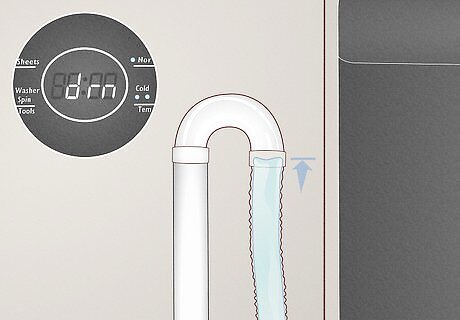
What It Means: The washer isn’t draining properly. Potential Solutions: Check the hose that leads out the back of the machine. That hose must angle down and away from the machine so that the water comes out lower than 96 inches (240 cm) from the ground but no lower than 39 inches (99 cm) from the ground. If the height is fine, undo any kinks you find. If there are no kinks, check the inside of the hose and remove any blockages you find.
HC or F8 E5
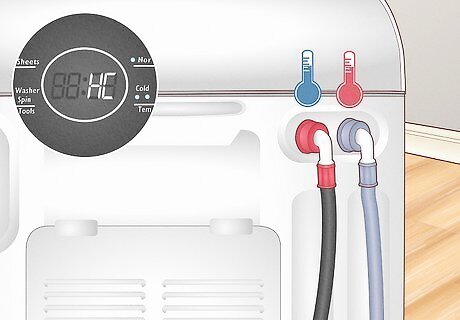
What It Means: Your hot and cold supply lines are installed backwards. Potential Solutions: Close the valves on both the hot and cold water lines. Then, unscrew the supply lines where they connect to the washer. Switch each supply line’s position and then re-install them. Just FYI, Whirlpool Cabrios require both hot and cold water to operate properly.
LF, F30, or F8 E1

What It Means: Short for “long fill,” the water level either isn’t changing or is changing in a way that doesn’t match the sensors in the machine. Potential Solutions: This isn’t automatically a problem so long as you don’t mind waiting a little bit longer than normal to run each load. This can happen if the supply lines to your washer are old and corroded or the water pressure in your home is too low. If the water pressure is fine, look for kinks in the pressure switch hose connection inside of your machine. Accessing the pressure switch hose may require a professional appliance repair service.
Ld, F32, or F9 E1
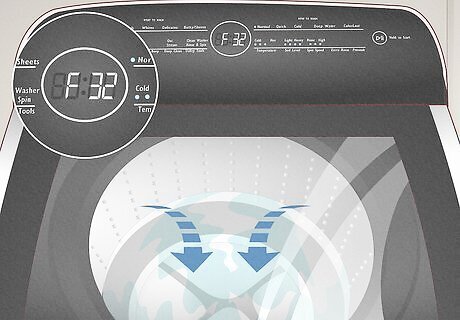
What It Means: Short for “long drain,” your machine is taking too long to drain. Potential Solutions: The drain hose may be dirty or partially clogged. Clean your drain hose and check the height so that it’s 39–96 inches (99–244 cm) from the ground. If the problem persists, the drain pump is likely starting to go bad. Contact a professional for help.
uL, or F0 E5

What It Means: Short for “unbalanced load,” the clothes inside the drum are causing a problematic weight distribution. When the drum is packed unevenly, the drum will spin out of whack. It may get so bad that it bangs against the walls of the washer. Potential Solutions: If the clothes are near the rim of the machine, you likely overloaded it. Remove half of the clothes and run your washing cycle. If the drum isn’t full, gently rearrange your clothes so that they’re more evenly distributed.
Sd, F71, or F0 E2

What It Means: Short of “suds detection,” the machine is detecting too much soap inside of the machine. Potential Solutions: Wait an hour or two for the soap to dissipate a bit. The Whirlpool will automatically finish the cycle once it detects the soap levels are appropriate. In the future, don’t use so much detergent! You don’t have to fill the canister up all the way to the fill line unless you have a really filthy and full load.
lid, F81, F5 E2, or F5 E4
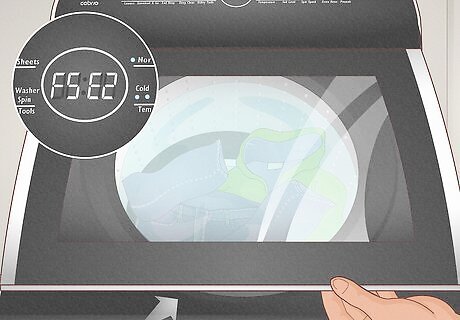
What It Means: The washing machine door isn’t closed. This error will also pop up if you run a cycle 3 times without opening the door to remove the clothes. Potential Solutions: If the error pops on as soon as you hit the “start” button, the odds are very high that you just didn’t lower the door all of the way, so lift the door up and then lower it. If you’ve been running multiple cycles, open and close the door.
Po
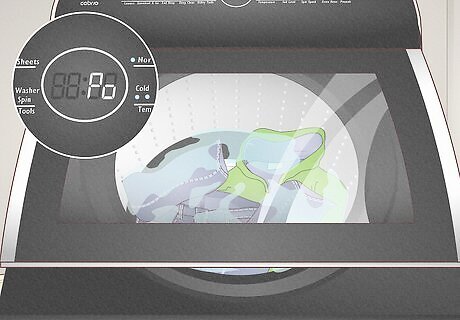
What It Means: Short for “pump out,” the machine is just letting you know it’s emptying the drum because the lid was left open for too long. Potential Solutions: You ran a cycle and then opened the door (potentially accidentally). Po is on the screen because the lid was left open for at least 10 minutes. This is the point where the washing machine automatically drains whatever water is in the drum. Just make sure the door is closed in the future.
dL or F80, 82, 84, or 85

What It Means: Short for “door lock,” the washing machine’s lid isn’t closing or locking properly. Potential Solutions: Open the lid and use a damp cloth to wipe any gunk off of the lock and clean it. Then, close the door. If the door still won’t close and lock when the cycle starts, contact a professional to repair the latch. You likely need a new washer door.
dU or F83
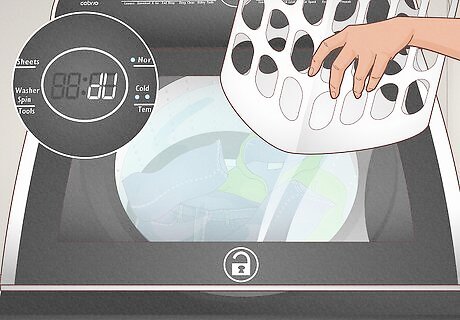
What It Means: Short for “door unlock,” the washing machine’s lid can’t unlock correctly. Potential Solutions: If you have anything sitting on top of the door, like a laundry basket, remove it to take the weight off of the lid. If there’s nothing on the lid, reset the machine by unplugging it, waiting 10 minutes, and plugging it back in. If you still can’t get the lid to unlock, contact an appliance professional. You can try breaking into the washer if you’d like, but you may physically damage the lock.
F8 E3
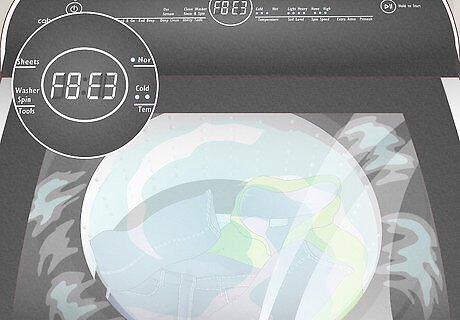
What It Means: This is an overflow condition. There’s too much water in the drum. Potential Solutions: If the washer is actually overflowing, the inlet water valves that control the inflow of water from the supply lines are likely damaged. Replace the supply lines and the washers inside of the machine’s valves. If there isn’t any overflowing, the sensor that detects the water level is likely fried. Try resetting the machine by unplugging it and waiting 10 minutes before plugging it back in. If that doesn’t work, contact a professional to have the switch replaced.
LdU
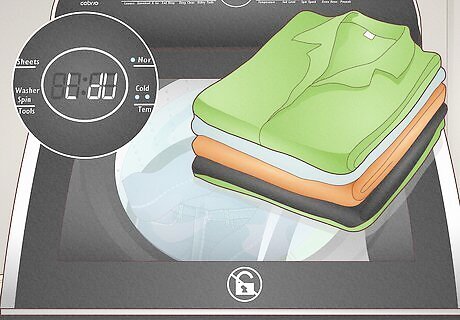
What It Means: The door can’t unlock because it’s stuck or something is on top of the lid. Potential Solutions: If there’s something on top of the lid, remove it. If there’s nothing on the lid, try jiggling the door a little bit to free the latch. Once the door is open, wipe down the latch with a damp cloth. If this keeps happening, call a professional to have the lid replaced.
LdL

What It Means: Short for “lid lock,” the lock function isn’t working correctly. Potential Solutions: So long as your washer is working correctly, this isn’t a big deal. The lock just isn’t engaging all the way. Try cleaning the latch. If that doesn’t work, you may need to hire a pro to replace the door of the machine.
Ofb
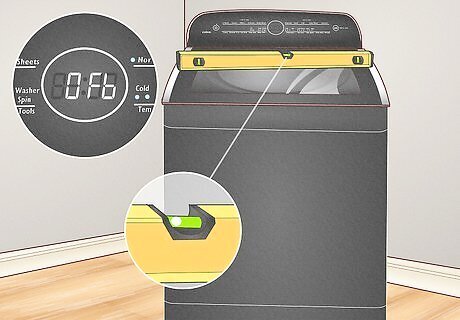
What It Means: This is short for “off balance.” The machine isn’t level, or the clothes are packed asymmetrically inside of the machine. Potential Solutions: Put a spirit level on top of the lid to see if the machine is level. If it is, open the machine and rearrange the clothes. If you have a huge load, split it into two cycles. If the machine isn’t level, put a brick or small object under the front of the machine to raise the legs. Then, twist the casters on each leg to adjust the height of the machine. Continue making minor adjustments until you successfully make the machine level.
F1 or F68

What It Means: This is a primary control failure. Basically, your washing machine’s computer ran into a bug. Potential Solutions: Try resetting your machine by unplugging it, waiting 10 minutes, and then plugging it back in. If this continues to happen, contact an appliance repair professional. There could be a variety of elements that need to be tested and/or replaced. This is going to be the solution for most F# and F# E# errors. The “F” is short for failure, so something electronic has been impacted. Important Note: Cabrios are pretty old by this point, and electronic repairs on washing machines trend towards the more expensive side (up to $500 in some cases). If you’re in the market for a new washing machine, this is probably a good time to go shopping.
F0 E4

What It Means: The water temperature in the rinse cycle is too high. Potential Solutions: Your washing machine has a temperature sensor known as a thermistor. The resistance of the thermistor isn’t correct, so the device is likely failing and needs to be replaced. Contact a professional repair company to have them take a look at it.
F1 E1

What It Means: The computer in the washing machine has failed. Potential Solutions: The main electronic control board has stopped working. Call a professional to take a look at your machine. If you’ve got experience tinkering with appliances, you can try looking for loose wires or connections on the board, but this is best left to the pros if you don’t know what you’re looking for.
F2, or F2 E1
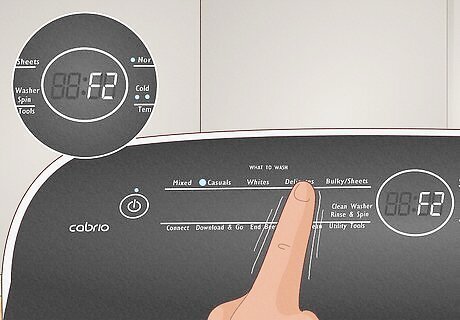
What It Means: This is a keypad error. One of your buttons isn’t working correctly. Potential Solutions: If the key impacted isn’t a relevant key for you (like “control lock” and you don’t have kids), feel free to ignore this. Otherwise, if you’re feeling ambitious, remove the machine's back panel and look at the wire connections to see if something isn’t plugged in all the way. Otherwise, you’ll need to call a pro for this one.
F40, or F1 E2

What It Means: The ATC (automatic temperature control) thermistor, which is responsible for monitoring and adjusting the water temperature, has either failed or registered a dangerous temperature. A thermistor is a resistor whose resistance depends on the temperature. Basically, it’s a control switch that turns on or off when the temperature reaches a certain level. Potential Solutions: The thermistor has likely shorted. Contact a professional to replace the thermistor and diagnose the source of the problem.
F41
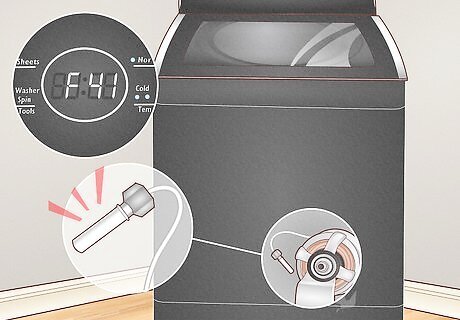
What It Means: The motor RPS (rotor position sensor) thermistor, which is responsible for monitoring the speed of the motor, has failed or registered a dangerous speed. Potential Solutions: The thermistor is probably dead. Reach out to a professional appliance repair company to have them take a look.




















Comments
0 comment